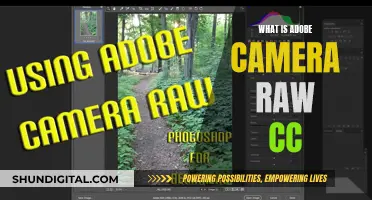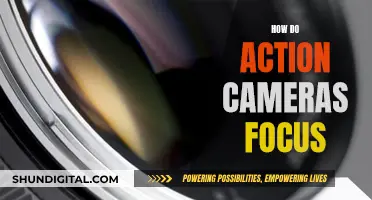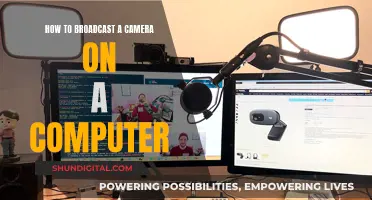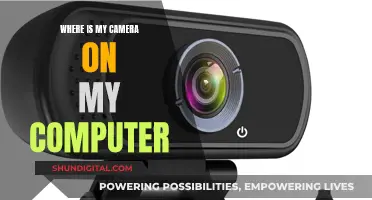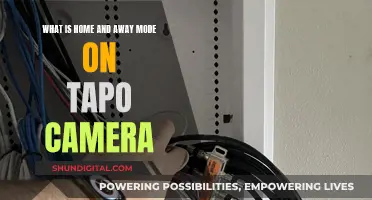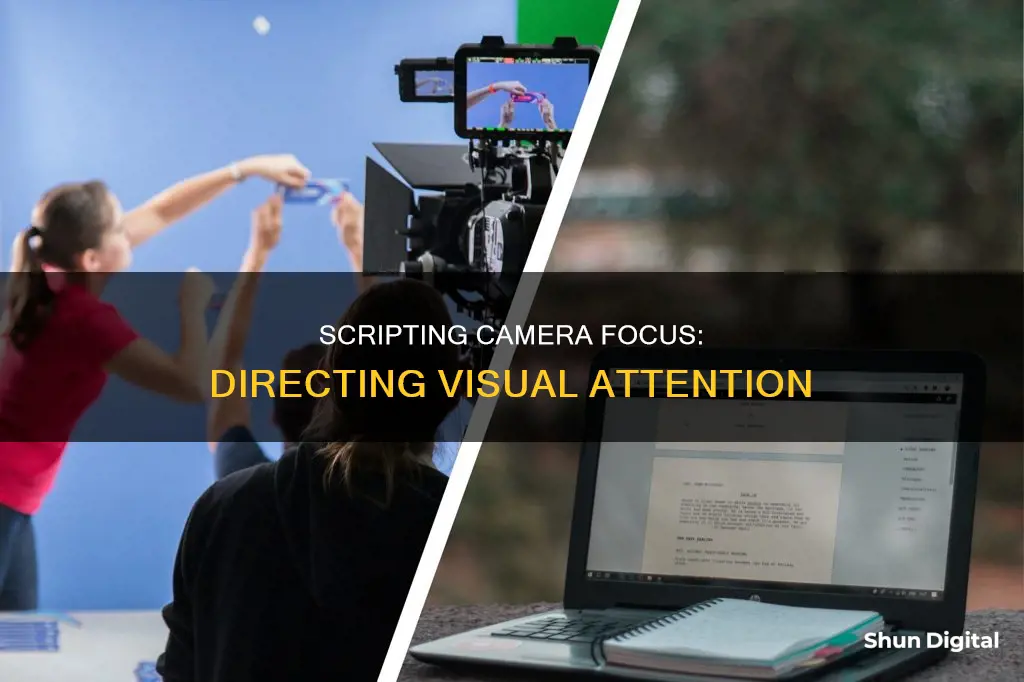
Whether a script should include camera directions is a highly debated topic. Some scripts include camera angles, shots, and movements, while others only include locations, actions, and lines. Generally, it is not recommended to include camera directions in a spec script, as it is the director's job to decide on the camera angles and shots. However, there are exceptions, and some writers include camera directions if they are also directing the film or if there is a specific shot that is crucial to the plot. Ultimately, the decision to include camera directions in a script depends on the writer's preference and the specific requirements of the project.
| Characteristics | Values |
|---|---|
| Camera shots | Close-up, tilt, pan, ECU (extreme close-up), wide-shots |
| When to include camera shots | When the writer is also the director |
| When the shot is crucial to the plot | |
| When it is necessary for the reader to understand the script's narrative |
What You'll Learn

Camera shots are usually the director's job
A director's job is to oversee the creative and conceptual aspects of a film, which includes deciding on the camera shots. While the script may include some details on the camera focus, it is usually the director who decides on the camera angles and shots.
The director of photography, also known as the cinematographer, is the head of the camera crew and works closely with the director to determine the style and visual look of the film. They decide on the camera lenses, lighting setups, composition, and camera movement for each shot. The director of photography then communicates this vision to the rest of the camera department.
However, there are exceptions where screenwriters include camera shots in their scripts. For example, if the writer is also the director, like in the case of Quentin Tarantino, or if the writer is working closely with the director, like in the case of Shane Black's scripts for Lethal Weapon and Kiss, Kiss, Bang, Bang.
Screenwriters can also guide the camera without mentioning it directly by describing what they see and using word choices that evoke tone, color schemes, angles, and distance. For instance, if they want to convey a sense of power, they can describe a character sitting in the background while others pace and talk in the foreground.
Ultimately, the director has the final say on the camera shots and works closely with the cinematographer to bring their vision to life.
Display P3: Why Your Camera Raw Looks Flat
You may want to see also

Camera angles are often considered amateurish
Camera angles are an essential aspect of filmmaking, enabling filmmakers to establish power dynamics, convey the mood of a scene, and drive the narrative. However, the inclusion of camera angles in a script is generally discouraged and often considered amateurish. So, why is this the case?
Firstly, specifying camera angles in a script can be seen as overstepping the role of a screenwriter. Screenwriting is primarily about crafting the story, characters, and dialogue. The visual interpretation of the script, including camera angles, is the domain of the director and cinematographer. By including camera angles, a screenwriter may be perceived as attempting to direct the film through the script, which can come across as presumptuous and amateurish.
Secondly, including camera angles in a script can limit creativity and collaboration. Filmmaking is a collaborative art form, and the script is often just the starting point. Directors, cinematographers, and other crew members bring their unique skills and perspectives to the project. By rigidly specifying camera angles, the screenwriter may hinder the creative input of these professionals. A director might want to change a camera angle to better convey the intended emotion or emphasise a specific detail. A cinematographer might have a unique vision for framing a shot that enhances the narrative. By being overly prescriptive with camera angles, the screenwriter may hinder the collaborative process and limit the potential of the final film.
Additionally, the inclusion of camera angles in a script can distract from the story. A screenplay should focus on conveying the story, characters, and themes in a compelling manner. When a script is filled with technical details about camera angles, it can become cumbersome and challenging to follow. This can detract from the story's impact and make it more challenging for the reader to connect with the characters and the narrative.
Moreover, camera angles in a script may not always translate effectively to the screen. What works on the page may not have the same impact on screen. The director and cinematographer bring their expertise and understanding of visual storytelling to interpret the script and choose the most effective camera angles. They consider factors such as framing, lighting, and the emotional tone of a scene to determine the best angle. A screenwriter, focused primarily on the written word, may not have the same understanding of visual storytelling and could choose angles that ultimately detract from the final product.
Finally, the inclusion of camera angles can impact the producibility and budget of a film. Specifying intricate or elaborate camera angles may increase the complexity and cost of production. This could make the script less appealing to producers, as it may require a larger budget or more specialised equipment to realise the vision. By keeping the script focused on the story and characters, a screenwriter can increase the chances of their work being produced and adapted for the screen.
In conclusion, while camera angles are a crucial aspect of filmmaking, their inclusion in a script is generally discouraged. Screenwriters should trust in the skills and expertise of the director and cinematographer to interpret their script visually. By avoiding the specification of camera angles, screenwriters foster collaboration, enhance creativity, and ultimately, contribute to a more successful film.
Understanding Program Mode: Camera's Auto-Adjusting Setting
You may want to see also

Camera directions can be distracting
Firstly, it's important to understand the role of a screenwriter. Screenwriters are responsible for crafting the story, characters, dialogue, and setting. They provide the creative foundation for a film, but the visual interpretation of their script is left to the director and cinematographer. Including camera directions in a script can be seen as overstepping the role of a screenwriter and may come across as amateurish or rigid.
Secondly, a screenplay is meant to be a collaborative document. By including specific camera directions, the screenwriter may hinder the creative input of the director and cinematographer, who are responsible for bringing the script to life visually. The director interprets the script and makes choices about framing, camera movement, and composition to serve the story and engage the audience. Cinematographers, also known as directors of photography, work closely with the director to achieve the desired visual style and ensure the camera captures the action effectively.
Additionally, including camera directions in a script can make it less adaptable and more costly to produce. Filmmaking is a collaborative process involving many departments and crew members. By allowing the director and cinematographer to make decisions about camera placement and movement, the production can be more flexible and work within budgetary constraints. Specific camera directions in the script may require expensive equipment or complex setups, limiting the creative options for the director and cinematographer.
Furthermore, including camera directions can distract from the story and characters. The purpose of a screenplay is to tell a compelling story through dialogue, action, and description. By focusing on specific camera movements and angles, the screenwriter may take attention away from the narrative and emotional core of the scene. A good script should provide a clear vision while leaving room for interpretation and creative input from the director and cinematographer.
Lastly, including camera directions can limit the marketability of the script. Film producers are looking for screenplays that are not only well-written but also commercially viable and producible. A script with extensive camera directions may be seen as less flexible and more expensive to produce, potentially making it less appealing to producers.
In conclusion, while there may be exceptions, such as when the screenwriter is also the director, it is generally advisable to avoid including camera directions in a screenplay. Doing so allows for a more collaborative and flexible process, ensures the focus remains on the story and characters, and enhances the marketability of the script.
Activating Camera Mode in Blender: A Step-by-Step Guide
You may want to see also

Camera details can waste precious page space
Spec scripts are meant to tell a story, not direct a movie. Camera details can waste precious page space and interrupt the flow of the story. The director and cinematographer will decide on the camera angles and lighting, so it is not the screenwriter's job to include these details in the script.
The screenwriter's job is to write with readability in mind. Including too many camera details can hinder the script's readability and make it difficult for the reader to visualise the story. It is important to allow the director and other members of the film crew to bring their own vision to the project.
However, there are some exceptions to this rule. If the screenwriter is also the director, they may choose to include camera details in the script. Additionally, if a specific shot is crucial to the plot, the screenwriter may include it. But in most cases, it is best to leave the camera details out of the spec script.
Instead of including camera details, screenwriters can use creative ways to guide the camera and actors without directing them. Descriptive language can be used to evoke tone, colour schemes, angles, and distance. For example, describing the sound of gravel or a splash of a puddle can indicate a close-up shot, while allowing a character to sit in the background while others pace can indicate a wide shot.
In conclusion, while it is important for screenwriters to know how to write shots into a script, it is generally best to leave the camera details out of the spec script. By focusing on telling a compelling story and using creative language to guide the camera, screenwriters can allow the director and other crew members to bring their own vision to the project.
Speeding Tickets: NY Camera Fines Explained
You may want to see also

Writers can guide the camera without mentioning it
While screenwriters should not specify camera angles or shots, they can guide the camera without mentioning it. This is achieved by describing what they see and using language to evoke tone, colour schemes, angles, and distance. For example, to keep the camera focused on a character under a car, a screenwriter might describe the dust being kicked up and clouding the person's view. To make a character appear powerful, the screenwriter might have them sit in the background while others pace and talk.
Screenwriters can also use their words to guide the camera by focusing on specific details. For example, in a scene where a character punches another, the writer might focus on the fist, the sound of the punch, or even the smell of the attacker's knuckles. This technique is called the "writer's camera" and can be used to build a toolkit of ways to describe moments and put them together in a sequence that feels emotionally powerful.
Another way to guide the camera is to use sensory details. In addition to sight and sound, writers can use touch, taste, and smell to bring readers into the scene. For example, the "smell of a lifetime's worth of greasy cheeseburgers wafted from Dale's knuckles" or "the taste of sulphur and gasoline so strong that Eliza had to keep her mouth clamped shut."
By using creative language and focusing on specific details and sensory information, writers can guide the camera without explicitly mentioning it, allowing them to establish their unique brand and voice.
Charging Your GoPro Ultra HD Camera: A Step-by-Step Guide
You may want to see also
Frequently asked questions
No, it is not recommended to include camera angles and shots in your script. Screenwriters are meant to tell the story of a film, not direct how it will be visually portrayed.
If you are also the director of the film, it is okay to include camera angles and shots in your script.
Your script should include the setting and time in the scene's slug line, using INT. or EXT. for interior or exterior, a brief description of the setting, and DAY or NIGHT for the time of day.
Describe what you see and lean into your word choice to evoke tone, colour schemes, angles, distance, etc. For example, if you want the camera to stay on a character doing repairs under their car and another car pulls up, describe the dust being kicked up and clouding the person's view, the sound of the gravel, or the splash of a puddle.
Yes, it is generally accepted that you can include camera directions in your script if they are crucial to the plot. However, it is still recommended to keep them to a minimum and only include them when absolutely necessary.


